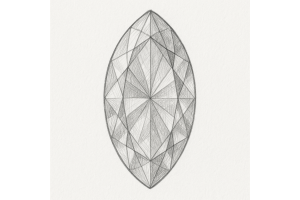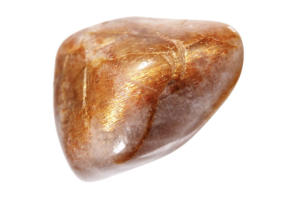GBP
/
GBP
/
Shipping to:
Currency:
Understanding Why Small Diamonds Fall Out of Ring Settings
Small diamonds falling out of a ring setting can be a distressing experience, but it is not uncommon. Understanding the causes can help in taking preventive measures to ensure that your precious stones remain secure. A variety of factors contribute to this issue, ranging from the quality of the setting to external wear and tear. Let’s delve into the main reasons why small diamonds might fall out and explore the best ways to protect your jewellery.
Poor Setting Quality
The craftsmanship involved in setting diamonds is crucial for their security. If a ring is poorly made or the setting is not designed with precision, small diamonds are more likely to become loose over time. A proper setting should tightly hold each stone in place without causing stress or damage to the metal or the diamond. It’s essential to choose a jeweller who has expertise and a reputation for quality work to minimise this risk.
Daily Wear and Tear
Rings are exposed to a variety of elements in daily life, from knocks and bumps to exposure to chemicals and water. Over time, this can weaken the setting and cause small diamonds to become loose. Even the most well-crafted ring is susceptible to the effects of daily wear, especially if it is worn frequently or during activities that involve rough handling.
Metal Fatigue
Metal fatigue occurs when the metal in the ring setting gradually weakens due to repeated bending or stress. This can happen over years of wear or from activities that put excessive pressure on the ring. As the metal fatigues, it may no longer hold the diamonds as securely as it once did, increasing the risk of them falling out. Regular inspections by a jeweller can help detect and address metal fatigue before it leads to stone loss.
Incorrect Sizing
A ring that is not the correct size can contribute to small diamonds falling out. If a ring is too loose, it can spin on the finger, causing repeated impacts to the setting. Conversely, a ring that is too tight may stress the setting, especially during activities where the fingers expand, such as in hot weather. Ensuring that your ring is properly sized will help maintain the integrity of the setting and keep your diamonds secure.
Lack of Regular Maintenance
Like all fine jewellery, rings require regular maintenance to ensure they remain in optimal condition. Failing to clean your ring or have it inspected by a jeweller can result in undetected issues that lead to small diamonds falling out. Regular cleaning removes dirt and oils that can accumulate in the setting, while inspections allow a jeweller to check for loose stones or weakened prongs that need tightening or repair.
Low-Quality Diamonds
The quality of the diamonds themselves can also play a role. Lower-quality diamonds may have internal flaws or inclusions that make them more susceptible to damage, particularly when subjected to stress or impact. While it’s uncommon for a diamond to break, poor-quality stones may be more likely to crack or chip, which could lead to them falling out of the setting. Investing in higher-quality diamonds and ensuring they are properly set can reduce this risk.
FAQs
What should I do if a diamond falls out of my ring?
If you notice that a diamond has fallen out of your ring, it’s important to stop wearing the ring immediately and contact a jeweller. They can assess the damage, secure the remaining stones, and replace the lost diamond if it’s found. Keeping the setting intact is crucial to prevent further losses.
How often should I have my ring inspected?
It’s recommended to have your ring inspected by a professional jeweller at least once a year. However, if you wear your ring frequently or during activities that could cause damage, more frequent inspections might be necessary. Regular check-ups help ensure that your diamonds remain securely set.
Can I prevent diamonds from falling out?
While there is no foolproof way to prevent diamonds from falling out, you can reduce the risk by taking several precautions. Ensure your ring is correctly sized, avoid wearing it during activities that could cause damage, and have it inspected regularly. Additionally, choosing a ring from a reputable jeweller with a high-quality setting can make a significant difference.
Is it expensive to repair a ring if a diamond falls out?
The cost of repairing a ring and replacing a lost diamond can vary depending on several factors, including the size and quality of the diamond and the extent of the damage to the setting. It’s best to get a quote from a professional jeweller, who can assess the specific situation and provide an accurate estimate. Insurance can also help cover the costs, so it’s worth considering when purchasing fine jewellery.
Does insurance cover lost diamonds?
Many jewellery insurance policies cover the loss of diamonds, but it’s essential to review your specific policy details. Ensure that your insurance covers both the replacement of the stone and any repair work needed to the setting. Keeping an up-to-date appraisal of your jewellery can also facilitate the claims process if a diamond is lost.
In conclusion, understanding the reasons behind small diamonds falling out of ring settings and taking preventive measures can help keep your precious jewellery intact. Regular maintenance, careful handling, and choosing quality craftsmanship are key to ensuring your diamonds stay securely in place.









